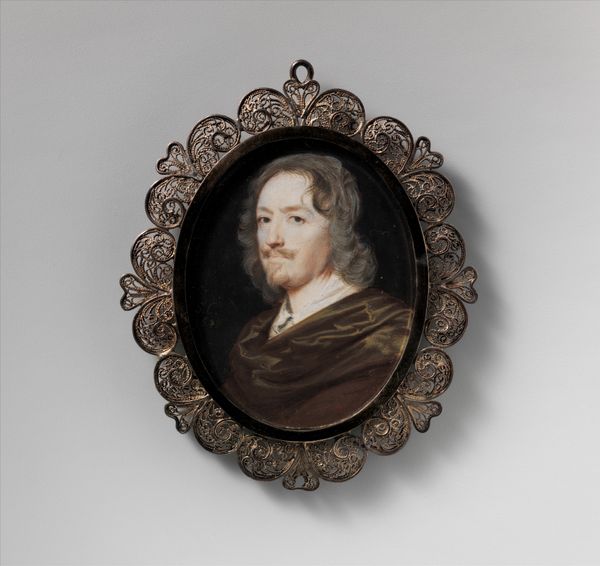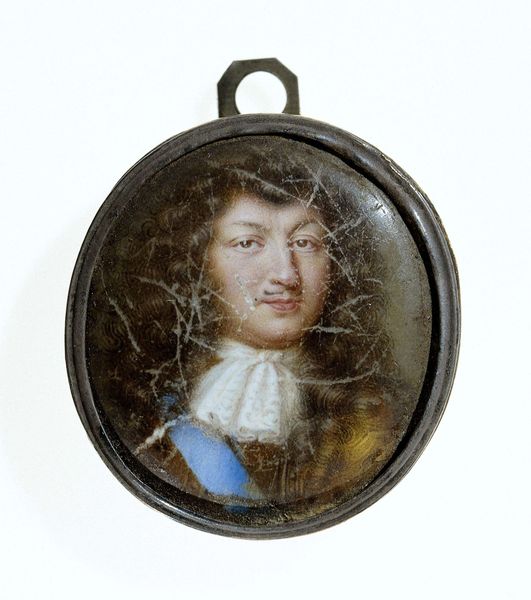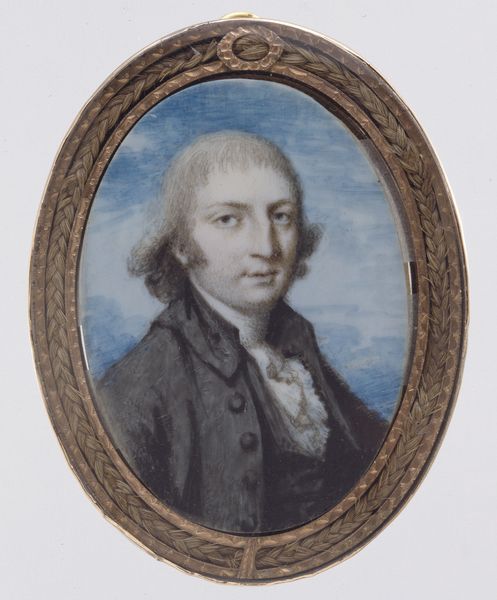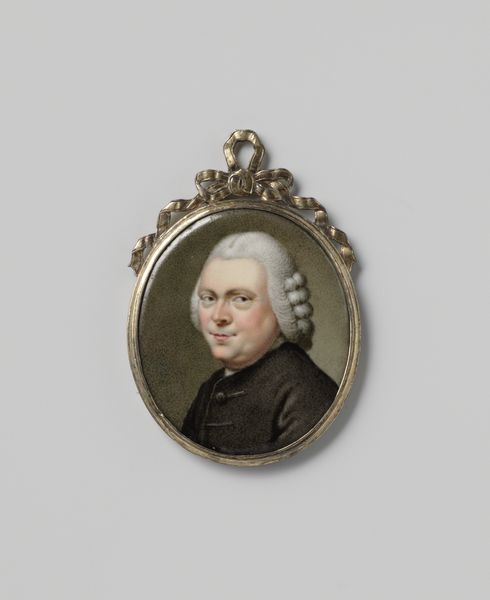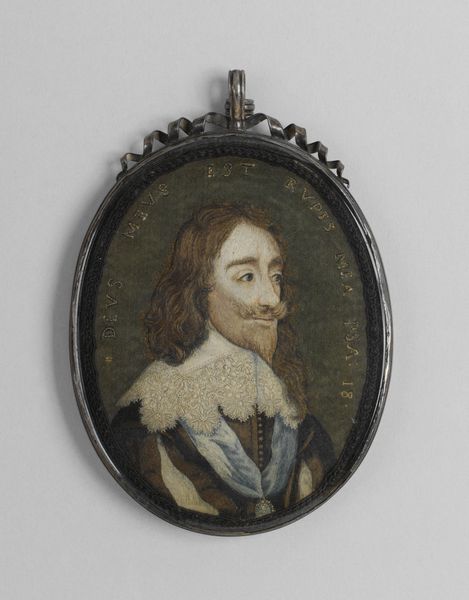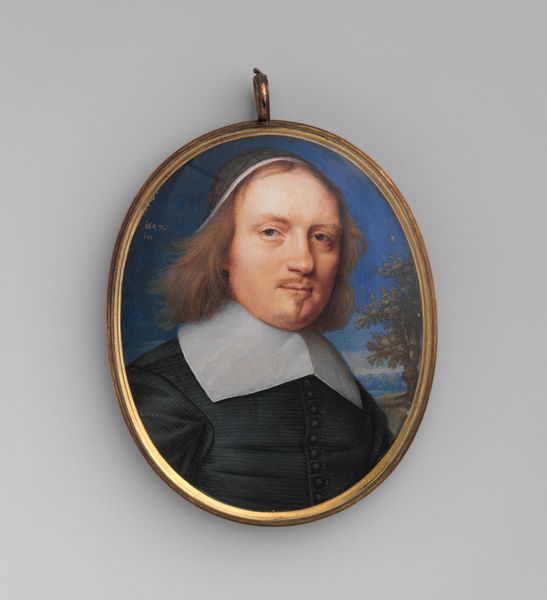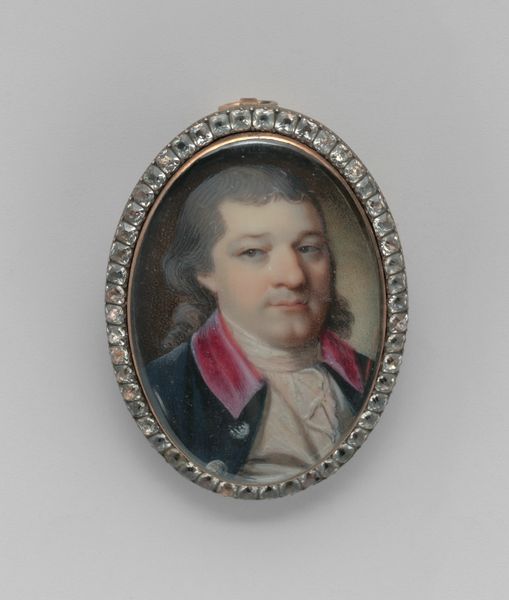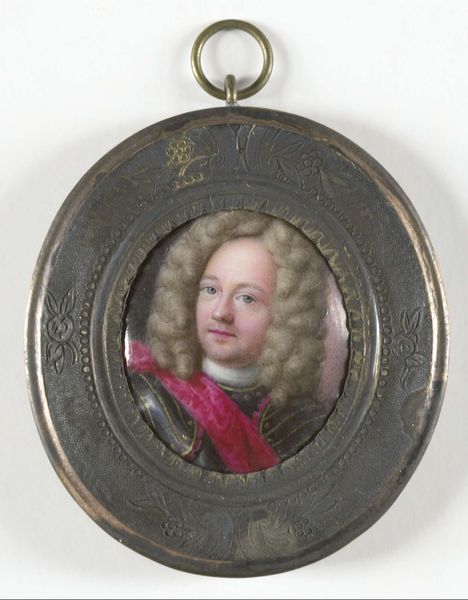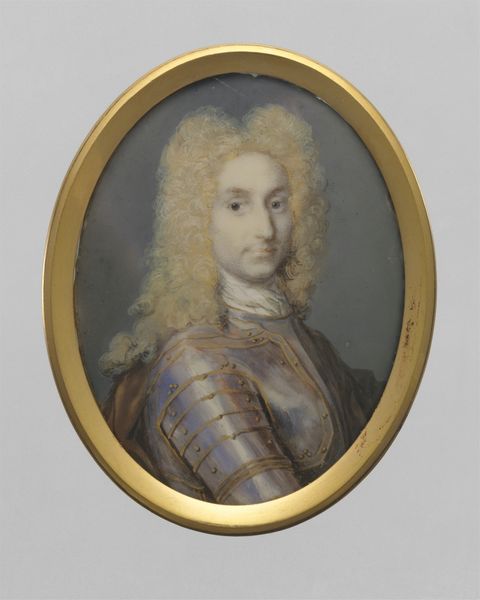
Portrait of a Man, Said to Be Philip Wharton (1613–1696), Fourth Baron Wharton 1648
0:00
0:00
#
portrait
#
baroque
#
academic-art
#
miniature
Dimensions: Oval, 2 3/4 x 2 1/4 in. (69 x 56 mm)
Copyright: Public Domain
Curator: Here we have John Hoskins' miniature "Portrait of a Man, Said to Be Philip Wharton," created in 1648. It resides in the Metropolitan Museum of Art. What catches your eye? Editor: There's an almost wistful quality to it, despite the formality. The tight cropping adds a sense of immediacy, like a stolen glance. He looks a little sad, or perhaps just very serious. Curator: Yes, there is something melancholic. It's interesting how a portrait can capture so much more than just likeness. Hoskins was quite skilled at portraying character through his delicate brushwork, especially noticeable with his control of watercolor on vellum. Given the subject's identity as Baron Wharton, and the date, 1648—smack in the middle of the English Civil War—his apparent somberness reads quite differently. Editor: Absolutely. Placing this within the socio-political turmoil transforms the reading. The baroque opulence is almost subdued, or even absent; we are left with the man himself. It becomes a meditation on power, class, and the instability of the time. Are we seeing a lament of fading aristocracy, or is Hoskins subverting established portraiture? Curator: Perhaps a bit of both? The miniatures were deeply personal, tokens exchanged between loved ones or allies, objects of intimacy. He has, I think, painted him without pretense. A face bearing the weight of those turbulent times. It is hard to tell whether the sitter really did appear how he is represented. Perhaps it is indeed a true reflection or not at all, it would be impossible to confirm either of those speculations today, of course! Editor: Indeed, we should be careful not to simply project our own contemporary views on those living hundreds of years ago, something so many people, especially art fanatics, enjoy doing far too much, myself definitely included at certain times! The fact remains however: by showing us Wharton with all his humanity, Hoskins resists easy categorization. It pushes beyond pure celebration, prompting a richer understanding. Curator: Well, thank you for bringing those contextual layers into the frame. It certainly deepens my appreciation of the artist’s sensitive touch and skill for subtlety. It is what sets the masters apart. Editor: And you, for emphasizing the aesthetic and technique; ultimately, both contribute to a work’s enduring appeal.
Comments
No comments
Be the first to comment and join the conversation on the ultimate creative platform.
